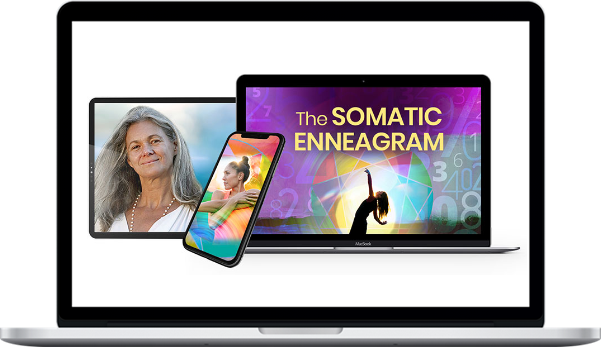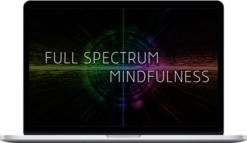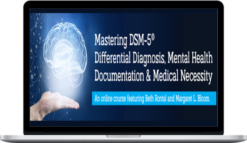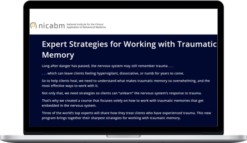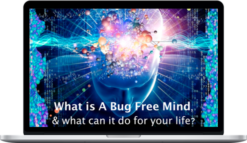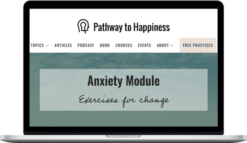Marion Gilbert – The Somatic Enneagram
$297.00 $77.00
Total Sold: 1
»Instant Delivery
Description
Marion Gilbert – The Somatic Enneagram
Explore how to relax your automatic stress responses, experience a more open mind, a less defended heart, and greater grounded presence through the Somatic Enneagram, which helps you to understand how the unique patterns of different personality types manifest in the body.
During this The Somatic Enneagram, you’ll:
- Learn about the 3 centers of intelligence and how they work together, according to the Triune Brain Model
- Grow your Enneagram study through somatic awareness to gain insight into how you filter and perceive reality
- Discover why the somatic lens of perception is significant in Enneagram work
- Explore your automatic responses to stress using the principles of trauma resolution therapy along with ancient wisdom traditions
- Become less triggered by challenging experiences, gain more resilience, and become more consciously aware of your reactions
- Explore how your past experience in the 3 centers of intelligence influences your current perception of reality
- Build capacity for somatic awareness through inner meditative practices that help you identify your default behavioral patterns
- Learn simple and accessible movement practices to help you gain a sense of self-regulation, resilience, balance, and harmony
- Discover how each Enneagram type corresponds to one of the following: body center, heart center, or head center
- Delve deep into each Enneagram type pattern through a somatic lens
- Explore how transformation happens from the inside out
- And much more!
While most of the time people operate primarily from their brain/mental center, or their heart/emotional center, the Somatic Enneagram allows you to connect with and embody your physical senses for more effective integration of your senses with your emotions and thoughts.
By understanding your body’s wisdom in conjunction with your personality type, you can experience a more open mind, a less defensive heart, and a more vital and resilient body with a greater sense of grounded presence.
The Somatic Enneagram ultimately helps you integrate and embody wisdom beyond the intellectual, allowing you to create real transformation in how you react to and engage with others in your world — increasing your capacity for deeper spiritual experiences.
What You’ll Discover in These 7 Modules
In this 7-part transformational intensive, Marion will guide you through the fundamental skills and competencies you’ll need to successfully relax your default behavioral patterns to experience a more grounded presence, and a more open mind and heart.
This course will feature step-by-step teachings and experiential practices with Marion. Each session will build harmoniously upon the previous ones, so you’ll develop a complete holistic understanding of the practices, tools, and principles you’ll need to relax your automatic stress reactions and feel more grounded.
Module 1: What Is the Somatic Enneagram?
Your Enneagram type is one of 9 different personality type patterns that help describe how you interpret the world and manage emotions. And knowing your type is only the beginning of your transformation journey.
By adding somatic awareness to your Enneagram study, you’ll gain insight into how you filter and perceive reality.
In our opening module, we’ll focus on how somatic awareness using the Enneagram map gives you access to the underpinnings of your character structure, and what drives your unconscious perceptions and behaviors.
In this session, you’ll discover:
- The 3 centers of intelligence and how they work together, according to the Triune Brain Model
- Why the somatic lens of perception is significant in Enneagram work
- How your past experience in the 3 centers of intelligence influences your perception of reality
- Ways to build capacity for somatic awareness through inner practice
- An inner practice for discernment between felt sense experiences while following your breath
- A grounding and orienting somatic practice to help you gain access to present moment awareness
Module 2: Somatic Awareness Practice
All too often, our automatic reactions are based on what’s happened to us in the past — which is why communication with others can be challenging, and why we’re not always able to truly receive and listen to each other.
In this module, we’ll explore our own automatic responses to stress using the principles of trauma resolution therapy, along with some ancient wisdom traditions including Mystical Christian, Sufi, Eastern Mysticism, Buddhism, Daoism, Vedanta, and Inner Yoga.
In this session, you’ll discover:
- Why our internal (the way we communicate with ourselves) and external (the way we communicate with others) communication has become hijacked by automatic highly-conditioned reactions, and learn why we often struggle to truly listen to each other
- The principles of trauma resolution practice, and how to use them to master your inner connection with your true Self by staying receptive in connecting with yourself and others
- What your felt sense lens of perception is, and why you likely have a hard time noticing it
- How to observe and cultivate the language for mapping your inner territory
- How shifting your attention will change what comes onto your screen of awareness, which helps determine the reality you see
- An inner practice that will take you to experience what happens when you shift your attention to the felt sense lens of perception
Module 3: Foundational Elements for Transformation
We’ve all created our own way of perceiving reality, based upon our most fundamental need to survive — and in this class, we’ll explore how transformation happens from the inside out.
You’ll discover that real change happens when you return to your essential nature and leave your identification with your conditioned self behind.
You’ll practice turning your attention inward to begin to notice what is arising within, so you can recognize and remember who you were created to be.
You’ll learn that you can move from the inside out, trusting yourself to be guided by your inner compass and allowing your essential nature to lead you into movement.
In this session, you’ll discover:
- What transformation looks like and how it really happens
- The method of the Somatic Awareness Practice
- An inner practice to cultivate the observer faculty of mind
- A movement practice to increase your capacity to trust your inner territory
- How to gain a sense of self-regulation, resilience, balance and harmony through reconciliation.
Module 4: Exploring the 3 Centers Via the Triune Brain Model
In this module, you’ll learn to discern between conditioned and wisdom qualities of the 3 brain centers, and come to recognize categories of perception that are ordinary and subtle.
According to the Enneagram patterns, we tend to prioritize one of our three intelligence centers in the brain.
Conditioned qualities are when everything is split into two opposing parts with the distinct experience of an “either/or” duality.
Wisdom qualities are the essential and unconditioned aspects that arise from an “and/and” non-dual reality.
And there’s a third force, harmonizing these two opposing forces, which we’ll explore in greater detail in this class.
In this session, you’ll discover:
- How to tell the difference between conditioned and wisdom qualities of the 3 triune brain centers
- Why the ordinary finite world creates two opposing sides, and how to discover a third force which deeply harmonizes and heals the perceived split of its dualistic nature
- A practice that allows you to experience and connect all 3 of your brain centers, rather than prioritize one over the others
- How all 3 centers of the triune brain have a driving negative core belief, a negative emotion, and a defensive reflex
- A practice that helps you transform negative reactions into wisdom qualities
Module 5: The Body Center
In this module, you’ll learn about Enneagram types 8, 9, and 1, along with their somatic patterns.
We’ll discuss the body center and share the somatic patterns that belong to these types. You’ll learn more about how Type 8 defends and protects, type 9 merges and harmonizes, and type 1 corrects and censors.
We’ll also explore the pain of separation, and the feeling of not belonging and being alone.
You’ll practice where you feel these sensations in your body, as it registers the pain and threat of being ousted or overlooked through separation.
You’ll come to know the adaptive strategies of the patterns and how they serve the need to belong.
There may be some unconscious memories arising where you felt like you didn’t belong. Where is this pain of being overlooked located in your body?
In this session, you’ll discover:
- The Enneagram number types that belong to the body center (8, 9, and 1)
- The core belief of “who I need to be” in order to belong in three different ways
- The preferred defensive reflex creating an automatic reaction in this center
- The somatic aspects of these patterns and how they manifest in your body
- An inner practice to help you understand where you’re feeling these conditioned patterns in your body
- A movement practice that allows the contraction and expansion of the body center
Module 6: The Heart Center
In this module, we’ll dive deep into the emotional patterns of Enneagram types 2, 3, and 4.
We all need connection, touch, nurturing, and the warmth of emotional connection with each other.
This class will be all about the need for connection and contact, as well as the potential threat of the loss of connection.
We’ll explore where our heart is defended, and where our heart is radiant.
We’ll also go to a place where we feel the pain and loss of connection in our bodies.
Adjacent to the places inside of ourselves that are experiencing stress of the loss of connection, there are simultaneously places that are already open and at ease.
By witnessing both with equal attention, you can witness reconciliation by embracing the paradox and connecting the opposites as a way of harmonizing.
In this session, you’ll discover:
- The Enneagram number types and somatic patterns that belong to the heart center (2, 3, and 4)
- The core belief of who you need to be in order to be loved and connect with people in three different ways
- Your preferred defensive reflex that creates an automatic reaction for this center
- An inner practice that helps you understand where in your body you’re feeling closed off and defended, in relation to your heart
- A movement practice that allows the shield and the radiance of the heart center to meet from a place of self-compassion
Module 7: The Head Center
In this module, you’ll learn about and explore your mental patterns through Enneagram types 5, 6, and 7.
We’ll work on cultivating an inner wisdom movement that comes from a receptive and open mind.
We’ll discuss the difference between narrow and expanded views, and explore what has become our own fixed mindset as described in the core belief of each type, and what is already open and expanded.
You’ll also learn a movement practice to help you understand where inside of yourself you feel and sense this core belief operating.
In this final session, you’ll discover:
- The Enneagram numbers and patterns that correlate with the head center (5, 6, and 7)
- The core belief of who you need to be in order to be validated by others in 3 different ways
- Your preferred defensive reflex that creates an automatic reaction for this center
- An inner practice to help you understand where in your body you’re experiencing feeling discounted and dismissed, creating a need for you to seek validation
- A movement practice you can take with you that allows the conditioned mind and expanded mind to meet and witness the experience of transcending into a state of open mind, giving you greater access to your intuition to receive knowledge
About Marion Gilbert
Marion Gilbert, RPT, who has been practicing physical therapy since 1978, is the owner of a well-established physical therapy practice and movement studio in Grass Valley, California. She has extensive training in Craniosacral Therapy, Somato-Emotional Release® and Trauma Resolution. She has been actively using the Enneagram professionally and personally since 2003.
She emphasizes understanding the role of the somatic lens of perception in facilitation of personal and spiritual transformation with the Enneagram. Her specific interest is in developing somatic awareness for reconciling 3-centered awareness, providing a platform for meditation, contemplation, and awakening practices. She has developed the Somatic Enneagram Certification Training and is teaching locally, nationally, and internationally. She is an adjunct faculty member of The Narrative Enneagram and an advisory board member of the Enneagram Prison Project.
More courses from the same author: Marion Gilbert
Delivery Policy
When will I receive my course?
You will receive a link to download your course immediately or within 1 to 21 days. It depends on the product you buy, so please read the short description of the product carefully before making a purchase.
How is my course delivered?
We share courses through Google Drive, so once your order is complete, you'll receive an invitation to view the course in your email.
To avoid any delay in delivery, please provide a Google mail and enter your email address correctly in the Checkout Page.
In case you submit a wrong email address, please contact us to resend the course to the correct email.
How do I check status of my order?
Please log in to HealthcareCourse account then go to Order Page. You will find all your orders includes number, date, status and total price.
If the status is Processing: Your course is being uploaded. Please be patient and wait for us to complete your order. If your order has multiple courses and one of them has not been updated with the download link, the status of the order is also Processing.
If the status is Completed: Your course is ready for immediate download. Click "VIEW" to view details and download the course.
Where can I find my course?
Once your order is complete, a link to download the course will automatically be sent to your email.
You can also get the download link by logging into your HealthcareCourse account then going to Downloads Page.
Related products
Total sold: 2
Total sold: 4


